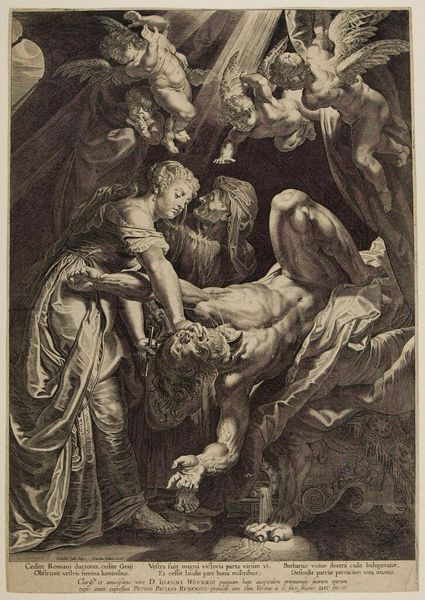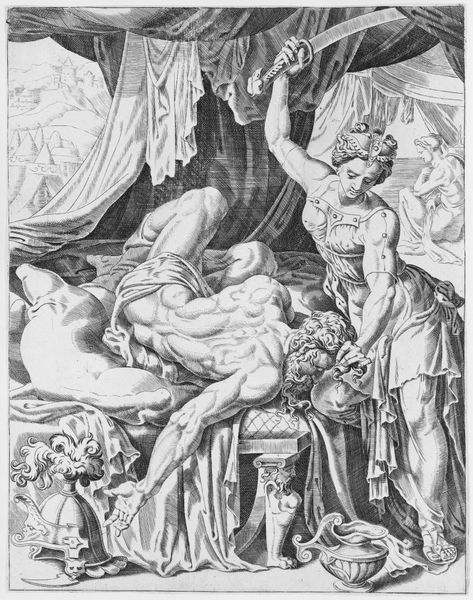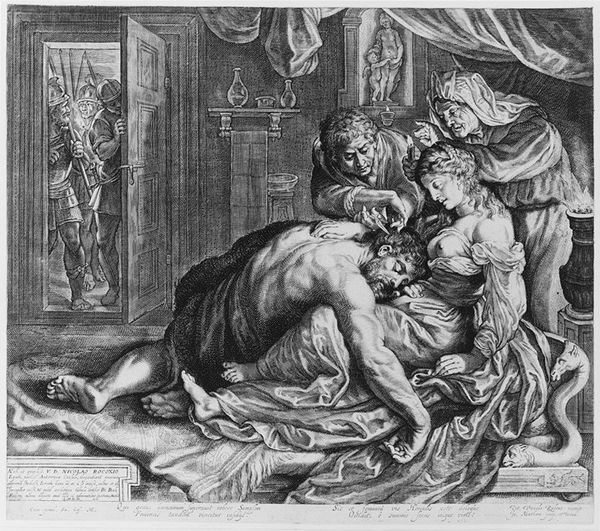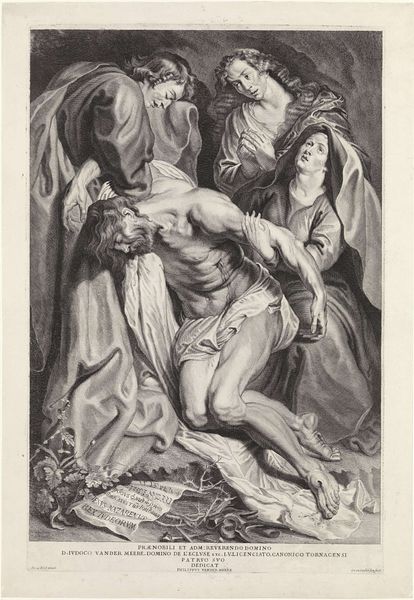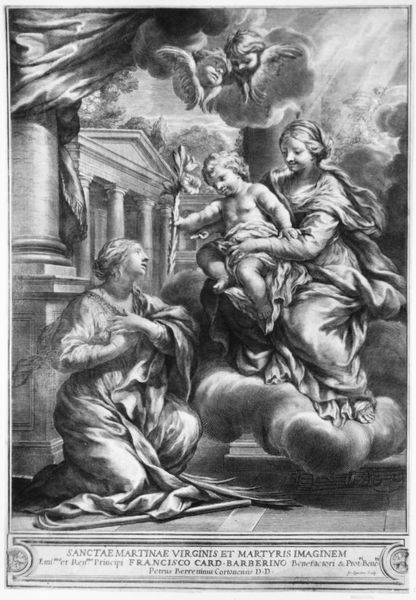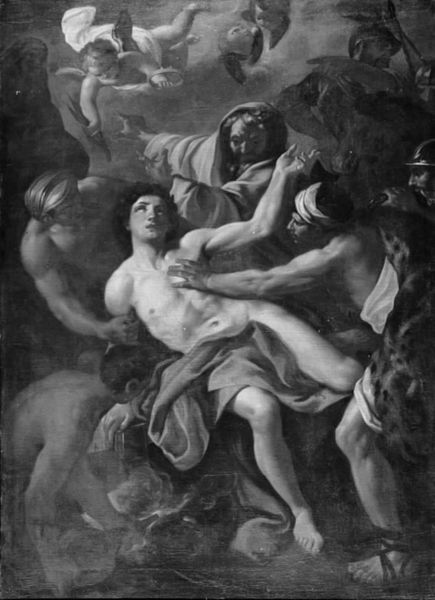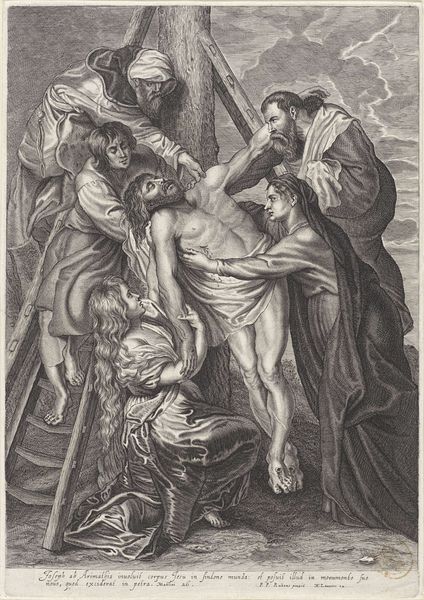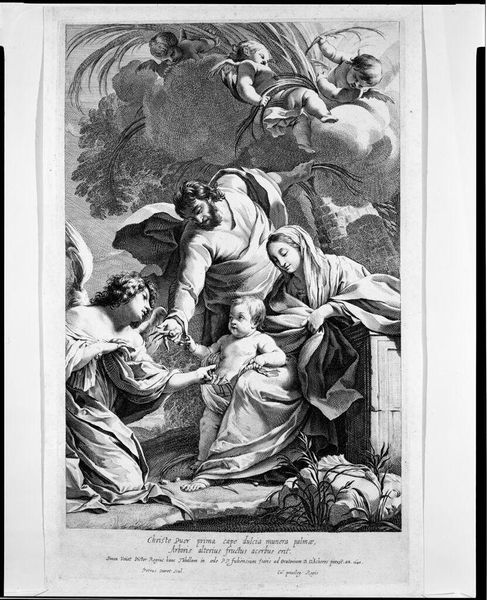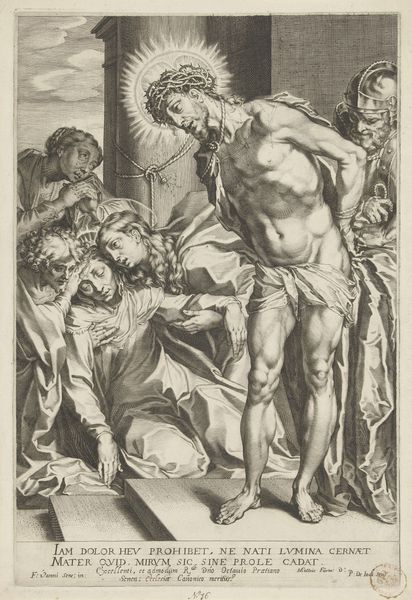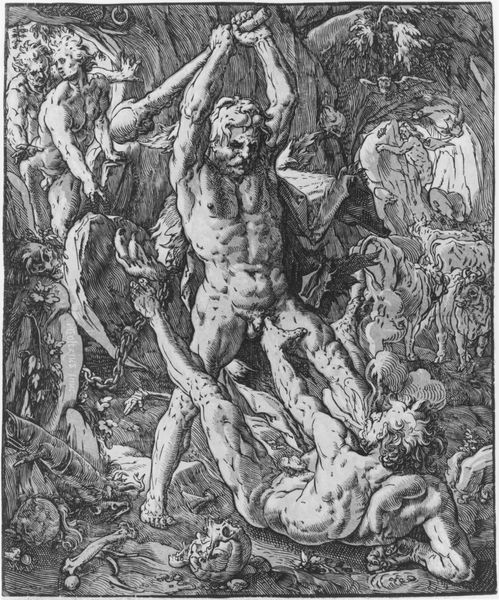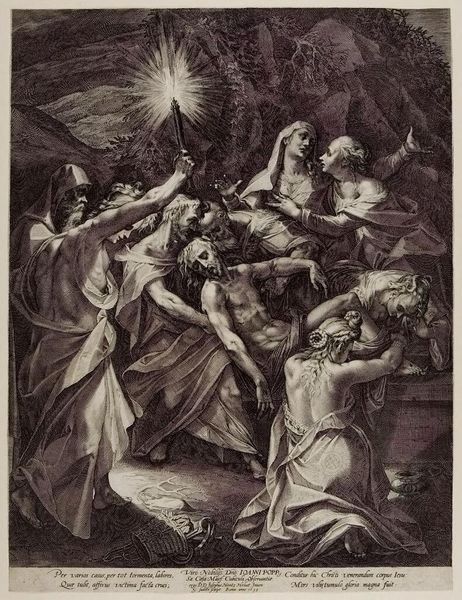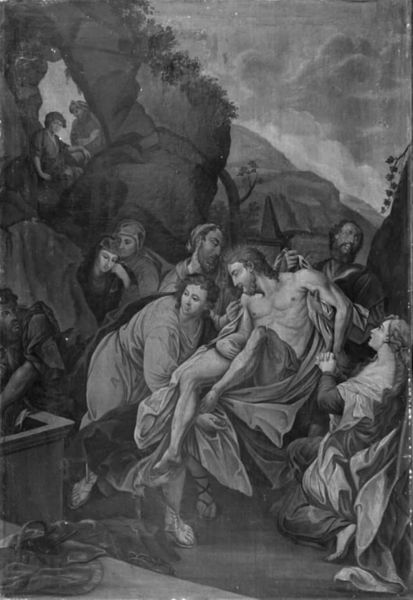
drawing, print, engraving
#
drawing
#
baroque
# print
#
charcoal drawing
#
figuration
#
black and white
#
line
#
history-painting
#
engraving
Copyright: Public Domain
This engraving, Judith Beheading Holofernes, was made by Cornelis Galle I, sometime between the late 16th and mid-17th centuries. It depicts a story from the Book of Judith, a deuterocanonical text, in which Judith, a Jewish widow, saves her city by seducing and then beheading the Assyrian general Holofernes. Galle's engraving, made during the Counter-Reformation, places Judith as a figure of virtuous and righteous action, rescuing her people from tyranny. Yet, the scene is rife with complex tensions. The visual drama captures Judith in the very act of severing Holofernes' head, her face a mask of grim determination. An older female servant assists, creating a contrast between youth and age, beauty and experience. The vulnerability of Holofernes, sprawled out in a drunken stupor, raises questions about power, gender, and violence. Is this an image of female empowerment, or does it perpetuate a troubling narrative of violence against men? Galle’s work invites us to consider the nuanced ways in which stories of heroism can also be stories of brutality, and how cultural anxieties can be reflected and refracted through biblical narratives.
Comments
No comments
Be the first to comment and join the conversation on the ultimate creative platform.
